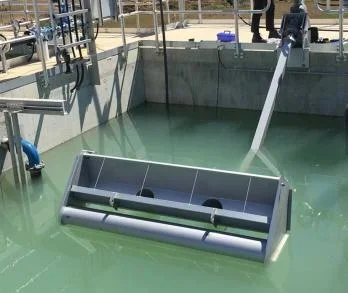A rotary water decanter is an important piece of equipment for separating solids and liquids in various industries. They play a vital role in wastewater treatment plants, mining operations, and food processing facilities. However, like any mechanical device, a rotary water decanter is subject to failure and failure. In this article, we will discuss some common troubleshooting and maintenance methods for rotary water decanters.

Insufficient speed of decanter centrifuge:
One of the most common problems with rotary water decanters is insufficient speed. This results in poor separation efficiency and reduced decanting capacity. To fix this problem, check the drive system, including the motor, gearbox, and drive belt. Make sure the motor is running at the correct speed and the belt is properly tensioned. Adjust motor speed or replace worn belts if necessary.
High Vibration Levels:
Excessive vibration can cause premature wear of the rotary water decanter components, affecting their performance. To fix this, check the decanter for any loose or damaged parts, such as bearings, shafts, or pulleys. Tighten any loose connections and replace any faulty components. Also, make sure the decanter is properly balanced and aligned. If vibration persists, it may be necessary to consult a professional technician to diagnose and resolve the problem.
Poor sludge dewatering:
If the rotary water decanter cannot effectively dewater the sludge, it may result in increased water content in the discharged solids. This can be caused by a number of factors including improper feed flow, incorrect polymer dosing, or blocked dewatering ports. To solve this problem, adjust the feed flow to ensure optimal dehydration conditions. Check the amount of polymer used and make necessary adjustments to enhance the flocculation process. Also, check the spin outlet for any blockages and clean as needed.
Excessive scroll and conveyor wear:
The vortex and conveyor belt are the key components of the rotary water decanter. Over time, these parts may experience wear due to the abrasive nature of the materials being machined. Excessive wear can result in reduced separation efficiency and increased maintenance costs. Regular inspection and maintenance are essential to prevent this problem. Replace worn scroll blades and conveyor blades promptly to maintain peak performance. Consider using wear-resistant materials or coatings to extend the life of these components.
Oil spill:
Oil spills are another common problem encountered with rotary water decanters. It can be caused by damaged seals, gaskets, or improper lubrication. Regularly check the decanter centrifuge for signs of oil leakage, and replace faulty seals or gaskets in time. Make sure the decanter is properly lubricated according to the manufacturer's recommendations. Regular oil analysis can also help detect potential problems before they escalate.
In conclusion, rotary water decanter is an important piece of equipment in various industries, but they are subject to breakdowns and breakdowns. Following proper troubleshooting and maintenance practices, regular inspections, preventative maintenance, and timely repairs are key to maximizing the life and performance of these vital machines.
How does rotary water decanter work
What are the advantages of rotary water decanter?
How to install rotary water decanter?
How to maintain rotary water decanter?
The working principle and application of rotary water decanter
How to choose the right rotary water decanter?
Analyze the future development trend of rotary water decanter
https://www.mingyecn.com/Rotary-water-decanter-troubleshooting-and-maintenance-methods.html
